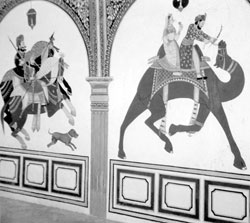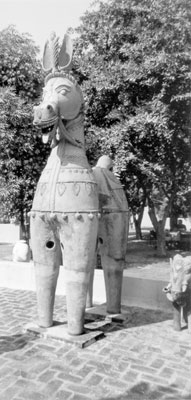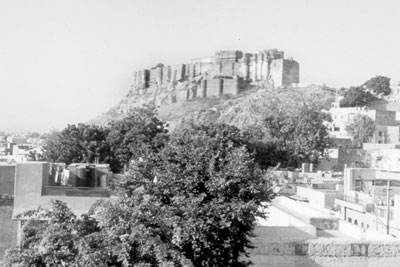“The Arts and Crafts of Rajasthan” with Distant Frontiers
In 1985 I traveled to India and found it to be one of the most exotic, fascinating and diverse cultures I had ever seen. Eighteen years and 24 countries later I traveled again to India — and found it to be one of the most exotic, fascinating and diverse cultures I had ever seen.
My trip, “The Arts and Crafts of Rajasthan,” Oct. 31-Nov. 19, ’03, was with Distant Frontiers (B2/1 Safdarjung Enclave, African Ave., New Delhi, 110 029 India; phone +91 11 26171280, e-mail info@distantfrontiers.com or visit www.distantfrontiers.com — Roma Satara, Managing Director).
The itinerary was planned by Rae Taube from Opa! Folklore Studies (7560-5 Eads Ave., La Jolla, CA 92037; phone/fax 858/456-2264 or e-mail opa-rae@juno.com). She is a semiretired travel agent with 30 years’ experience who now works with travelers interested in the arts, crafts, music, dance and cultures of the countries they visit.
The tour cost was $2,335 per person, not including international air. Most of the tour participants flew on either Singapore Air or Thai Air from the West Coast for about $1,200.
In Rajasthan, the palaces, forts and temples are well-maintained and amazing architectural wonders. We started with a less-traveled (and rough) road to the Shekawati region in the north, where wealthy merchants in the 19th and 20th centuries decorated their homes with brilliant murals inside and out. We stayed in a nicely equipped “farmhouse” for our visits there.
We also attended the Pushkar Camel Fair; taking a cart pulled by a camel through the various camps was other-worldly!
In Jaipur we visited a wonderful museum with richly embroidered costumes and armaments. We rode an elephant to see the Amber Palace, a marvel of construction with an impressive interior.
We were able to visit many artisans in their small shops, such as wood and marble carvers, marble inlay workers, embroiderers and textile makers. In Delhi, the Museum of Indian Terracotta featured monumental figures of horses and other animals all crafted in clay and fired. The Crafts Museum, also in Delhi, was a showcase of many disciplines and a good place to buy (directly from the artisans) — the prices were right.
I’ll mention two highlights of the trip. The Lake Palace Hotel in Udaipur is usually reserved just for guests, but on a really blissful late afternoon we had high tea in a lovely lily pond garden. The other exceptional visit was to the Meherangarh Fort in Jodhpur, whose stone interiors and exteriors are carved in fanciful “hanging lace” designs.
The museum area is particularly spectacular, with a vast array of hand-worked carriages, armaments and furniture and lavishly decorated rooms painted in gold with jewel inlays.
It was a very intense trip because so many things were programmed. Despite the “sensory overload” each day, it was a great success; the group could not think of one thing that should have been eliminated. India remains one of the great magical lifetime experiences in travel.
WALTER MOFFITT
San Diego, CA



